Every David Fincher Movie Ranked, From ‘Alien 3’ to ‘The Killer’
- Oops!Something went wrong.Please try again later.
- Oops!Something went wrong.Please try again later.
David Fincher is one of the most important filmmakers of his generation – endlessly praised, shamelessly ripped off and somehow still undervalued (He still hasn’t won a Best Director Oscar).
His work conjures up darkened hallways, dogged detectives and crazed killers. The word “Fincherian” has come to describe something twisted and somehow beautiful. As an artist he frequently pushes the boundaries of what is possible technologically, while also playing with the comfort level of his audience. If it doesn’t feel a little bit dangerous, is it even a David Fincher movie?
With “The Killer,” in theaters now and on Netflix on November 10, Fincher takes us on another wild journey, this time alongside a sardonic hit man (Michael Fassbender). In celebration of “The Killer,” we thought we’d look back at his entire filmography. It’s a journey as dark and labyrinthine as anything the filmmaker could cook up.
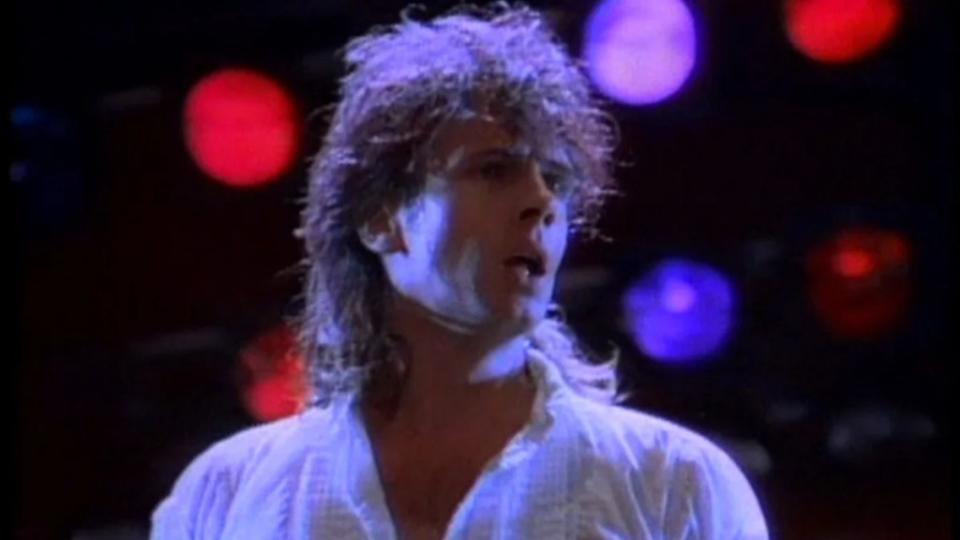
13. “Rick Springfield: The Beat of the Live Drum” (1985)
Yes, a Rick Springfield concert movie is technically David Fincher’s directorial debut. It acts as a compilation of sorts, too, for the music videos that Fincher and Springfield were working on at the time, including “Bop Til You Drop,” a dystopian sci-fi mini-movie heavily informed by the director’s time at Industrial Light & Magic. (He had worked in the photography and matte departments at the famous visual effects house on projects like “Return of the Jedi,” “Indiana Jones and the Temple of Doom” and Michael Mann’s famously problematic “The Keep.”) The concert was filmed in Tucson and, via the magic of visual effects, has a vaguely sci-fi-ish concept. It’s not bad, exactly, but it’s not a landmark concert documentary either, something you’d probably imagine Fincher might try later in his career but, so far, hasn’t. This pops up sometimes on streaming and you can buy it digitally on Amazon for $3. (There’s also a high-quality copy on YouTube.) For Fincher completists only but a fun watch/listen regardless.
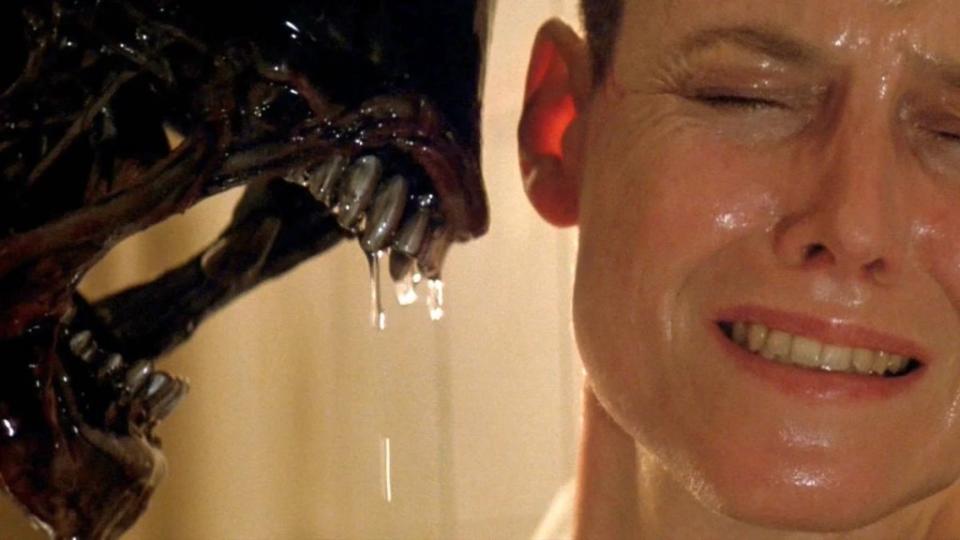
12. “Alien 3” (1992)
Fincher would probably not even count this as one of his movies; he’s so distanced himself from the film and his experience making it. And it’s understandable. He was at least the third director on the project, after Renny Harlin (who was working off of scripts by cyberpunk legend William Gibson and later Eric Red) and Vincent Ward, whose version was set in a fantastical space monastery on a wooden planet. “It was monks in space, a Gothic movie,” production designer Norman Reynolds remembered on the making-of documentary “Wreckage and Rage.” Ward was let go while sets were already being built; Fincher was brought in and turned the monks into prisoners. The idea of Ripley (Sigourney Weaver, cashing a then-astronomical $4 million paycheck) surrounded by thieves, rapists and murderers (plus an alien!) is interesting, but you can feel that indecision in the final movie. (It perhaps had the most misleading teaser trailer of all time, which promised that “On Earth, everyone can hear you scream.”) Fincher felt undermined and unsupported, with a script that never coalesced and a film that was taken away during editing. (The “assembly cut” on the home video release approximates Fincher’s original cut but he refused to get involved in this edition.) It says something of Fincher’s genius that some of the most iconic images of the entire franchise (including that moment where the alien comes up to Ripley but doesn’t attack her) come from a film so hopelessly compromised.
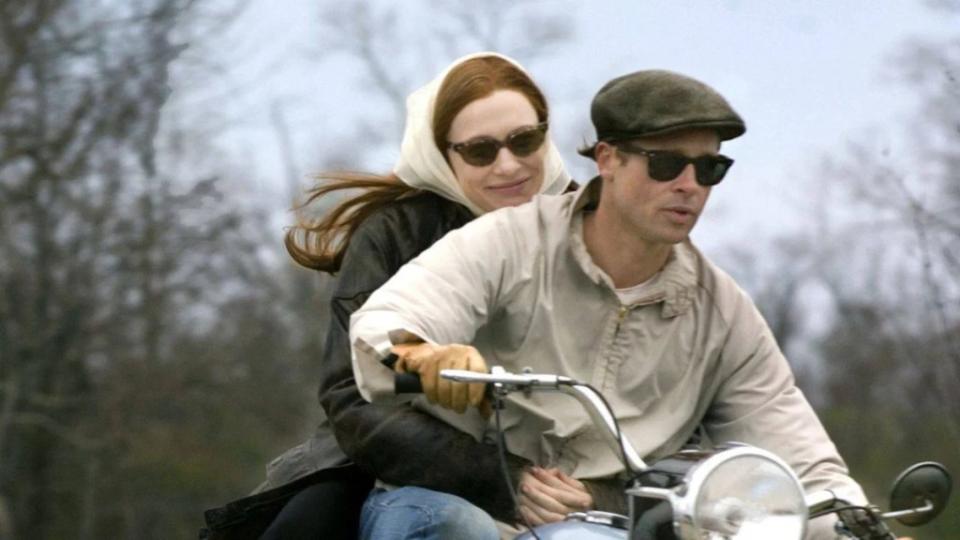
11. “The Curious Case of Benjamin Button” (2008)
One of those notorious Hollywood projects that bounced around for years, this F. Scott Fitzgerald adaptation would go along attracting mega-watt talent (most famously Steven Spielberg and Tom Cruise) without anyone committing. Fincher first saw the project in the early 1990s, when he was trying to convince Industrial Light & Magic to make the alien in “Alien 3” with computer graphics but was sidelined by the technical limitations. “There came a time when I seriously thought that this was never going to get made. This is going to be one of those scripts that everybody writes about,” producer Kathleen Kennedy said in the lengthy making-of doc on Criterion release. Fincher returned to the project after his BFF Spike Jonze said that he was leaving it; Jonze was unhappy that Paramount had hired Eric Roth to do a new version of the screenplay (Robin Swicord had penned eight drafts by that point). Fincher fell in love with Roth’s draft and began mounting the ambitious project, relying on cutting edge visual effects to allow for Brad Pitt to start the movie as an old man and move backwards until he is a dying baby. (The visual effects, perhaps, were not quite ready yet.) It’s easy to compare “The Curious Case of Benjamin Button” to “Forrest Gump,” another Roth-penned project where a slightly aloof character drifts through time, both engaging with and curiously removed from, real-life historical events. But Fincher’s movie is darker and stranger; his chief inspiration for a film that ostensibly is about the celebration of life, being the moment that he said goodbye to his father. That’s an odd stew to contend with. And while “The Curious Case of Benjamin Button” is never short of ravishing, with luminous cinematography by Claudio Miranda and a lush score by Alexandre Desplat, there is still something of an emotional disconnect (and not because of the visual effects either). Things that normally would have never passed Fincher’s sniff test (like how Cate Blanchett would have known all of the events leading up to her accident) are allowed to remain in a rare instance of sentimentality overtaking good sense. At turns awe-inspiring and oddly inert, “Benjamin Button” is still a treasure. But one that might be more impressive with the patina of age.

10. “Mank” (2020)
Perhaps Fincher’s only true “passion project,” “Mank” started as a screenplay by his father, Jack Fincher, that David intended to direct in the late 1990s. (The same casting director joked that she had been working on the movie since 1997.) Following the second season of “Mindhunter,” Fincher pitched “Mank” to Netflix in the form that had gotten it waylaid 30 years earlier – shot in black-and-white, with audio processed to sound like it had been made in the 1940s. While the original script was heavily influenced by Pauline Kael’s controversial essay “Raising Kane,” which stated that screenwriter Herman Mankiewicz (Gary Oldman), not Orson Welles, was the true author of “Citizen Kane,” Fincher said that he didn’t have much interest in stoking the debate. (Fincher told the New York Times: “It was not my interest to make a movie about a posthumous credit arbitration. I was interested in making a movie about a man who agreed not to take any credit. And who then changed his mind. That was interesting to me.”) Instead, Fincher, in a promotional documentary, said that Mank was “a great avatar to look at Hollywood in its heyday.” To that end, the cast is uniformly excellent, with Charles Dance as William Randolph Hearst and Amanda Seyfriend, in an Oscar-nominated performance, as Marion Davies. “Mank” is a delightful bauble, full of all sorts of trademark Fincher embellishments to make the movie look and sound like it was retrieved from a vault alongside “Citizen Kane,” with a divine orchestral score by Trent Reznor and Atticus Ross and seamless visual effects by ILM, but it’s also somewhat slight, made all the more so by the ephemeral nature of Netflix films. It was the movie that Fincher had to make. And now it’s ours to enjoy.
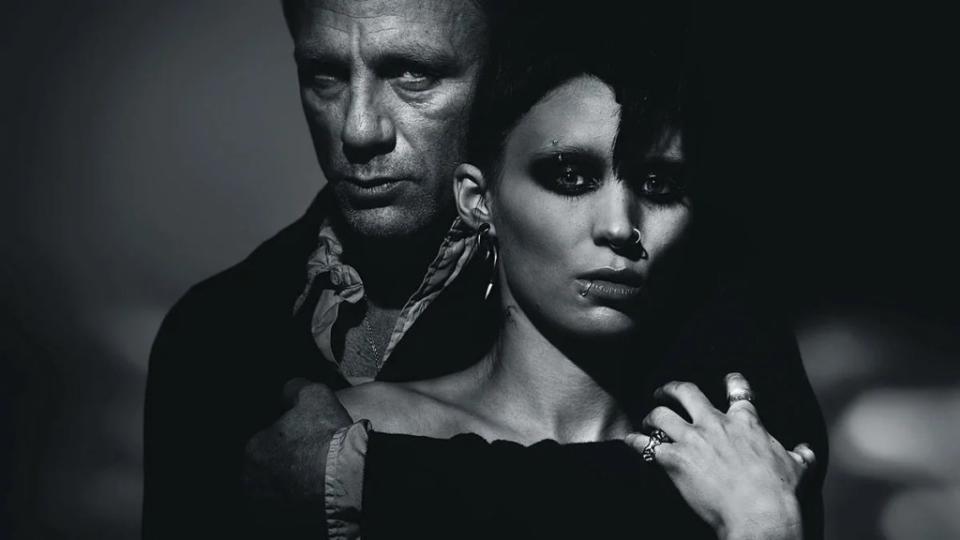
9. “The Girl with the Dragon Tattoo” (2011)
Lured by what he described at the time as “a franchise movie for adults,” Fincher turned around and made “The Girl with the Dragon Tattoo,” based on the international best seller by Stieg Larsson (that had already been adapted as a successful series of films in Sweden), immediately after “The Social Network.” (The first day of shooting was 25 days after he delivered the final cut of “The Social Network.”) The meticulous Fincher openly bemoaned the lack of prep time and it seemed like a mad dash to get the finished film done a little more than a year after his Facebook drama. But that possibility – of making a series of big budget studio films for adults, was something he’d been anxiously waiting for. And you couldn’t put off another adaptation of the material for another year. The resulting film, with Daniel Craig as the dogged (but defamed) newspaper editor recruited by a rich family (led by Christopher Plummer) to investigate a familial disappearance and Rooney Mara as the street-smart hacker he enlists to help the investigation, does feel a little half-baked. This is perhaps best exemplified by the actors’ approach to the material’s inherent Swedish-ness; Rooney is so committed she could have probably appeared in a Stockholm theater troupe without anyone noticing, while Craig doesn’t attempt an accent whatsoever. (Plummer and Robin Wright are somewhere in the middle.) Most of the problems with the movie, like it getting lost in the procedural and it being a murder mystery without a murder, are symptoms of the source material, which Fincher and screenwriter Steve Zallian gamely wrestle with. And while it underperformed financially, dashing Fincher’s plans for his franchise for adults, it was critically received, with several Oscar nominations (including for Mara) and one win. Ah, what could have been.
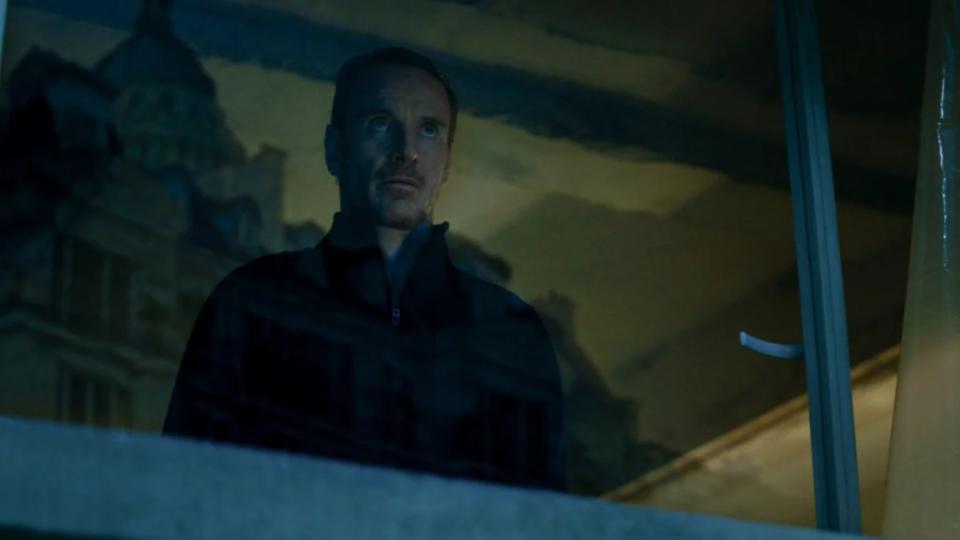
8. “The Killer” (2023)
A pulpy, yellowed paperback of a movie (complete with chapter titles), “The Killer” is Fincher’s most streamlined movie since “Panic Room” and its raw unadornment should be celebrated. Based on a popular French comic book series first published in the late 1980s, Michael Fassbender plays an unnamed assassin who, after a hit goes wrong, embarks on a roaring rampage of revenge against pretty much everybody. Deceptively simple , at least superficially (Fincher has referred to it as a “B-movie”), there’s a ton going on underneath the hood of “The Killer” – from barbed commentary on what it means to exist in a world obsessed with the gig economy to the omnipresence of certain brands. It’s also Fincher purposefully deconstructing the “stylish hitman” trope that has been a part of cinematic language since at least Jean-Pierre Melville’s classic “Le Samouraï.” All of the elegance and sophistication associated with the debonair murderer is gone. Modernity has done away with coolness. In “The Killer” Fassbender wears an ugly bucket hat, listens to the Smiths (a particularly memorable sequence is set to “How Soon is Now?”) and orders crap on Amazon. There is, too, an element of metatextuality, as Fassbender, with his endless pontificating, feels like somebody who got a little too into “Fight Club” and wound up an actual psychopath. One of Fincher’s most propulsive, rewatchable movies (and one of his funniest), with a disquieting score by Reznor and Ross and an array of finely tuned performances, including from Tilda Swinton and Charles Parnell. With “The Killer,” Fincher proves that he’s just as sharp as he ever was.
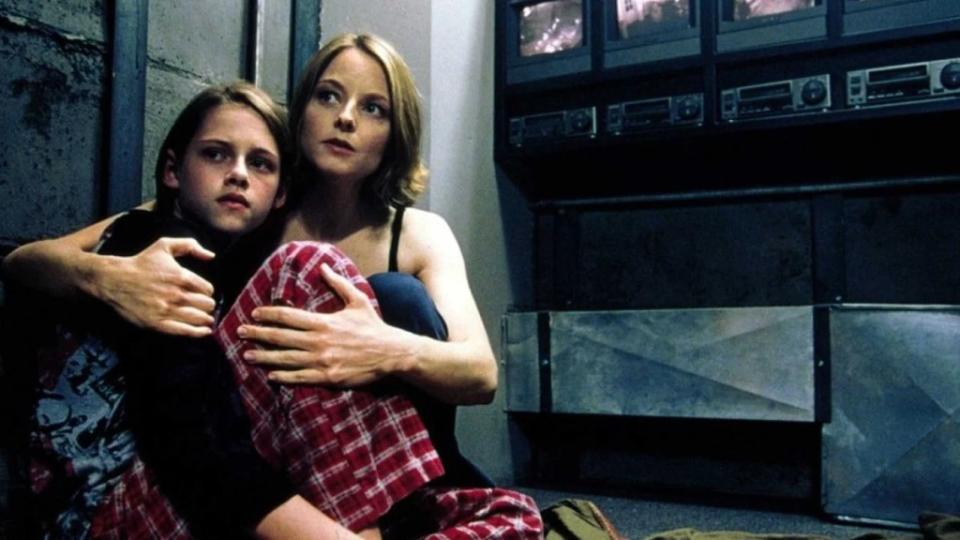
7. “Panic Room” (2002)
For a movie that suffered through a number of production hurdles, including a recasting of the main character (when an old injury of Nicole Kidman’s acted up, Jodie Foster sprung into action … whose pregnancy then suspended the shoot) and a swapping of cinematographers, this is Fincher’s most streamlined and muscularly entertaining work, a nonstop thrill machine built solely to entertain. “Panic Room” is built around an ingenious premise – a woman (Foster) and her young daughter (Kristen Stewart) move into a massive brownstone that’s equipped with a panic room. When a trio of thieves (Forest Whitaker, Jared Leto and Dwight Yoakam) break into their apartment, they hide in the panic room – but that’s where the thieves want to get in the most. (There’s a secret safe in there!) Marshalling all of his technical expertise, Fincher advances some of the elements he pioneered in “Fight Club,” like the computer-assisted impossible camera moves (most notably a single shot that establishes the geography of the entire brownstone by zooming into keyholes and through coffee cup handles), placing those flourishes alongside antique elements like a disappearing floor gag that’s right out of Alfred Hitchcock’s “The Lodger” (back in 1927), for the rare Hollywood thriller that actually thrills. Perhaps the only Fincher movie that could adequately be described as “underrated,” there’s a richness to the movie that is hard to quantify. Maybe it’s the ferocity of Foster’s performance or the breathlessness of the film’s pacing. In the years since the release of “Panic Room,” Fincher has openly questioned whether or not he “overcooked” it. His next movie, while still employing his love for technology, would be his least flashy, perhaps as a response to the visual decadence of “Panic Room.” Still, the movie remains his most fiendishly entertaining contraptions without losing any of the delectable darkness that made him so popular.
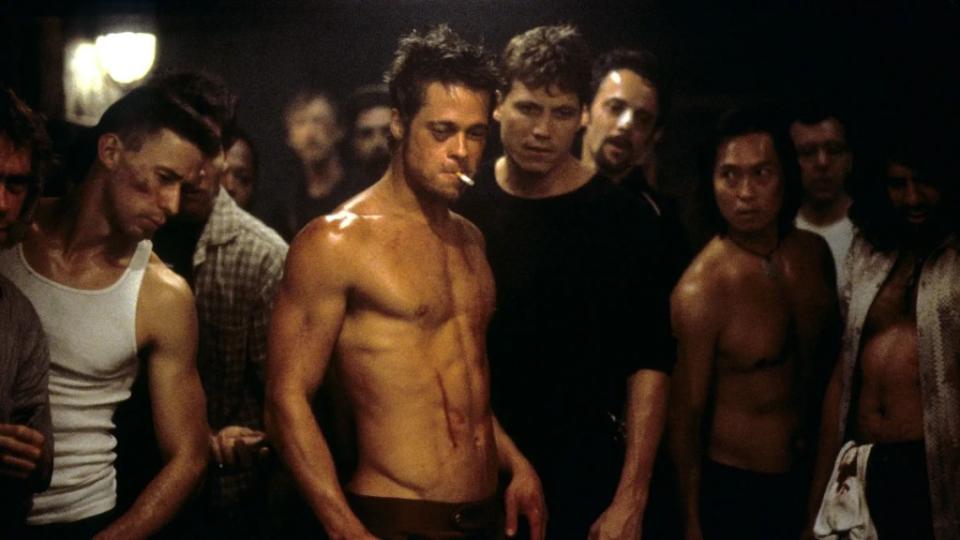
6. “Fight Club” (1999)
“Fight Club,” adapted from the incendiary novel by Chuck Palahniuk, was fiercely debated upon release, with critics decrying its violence and narcissism, and opened to middling box office. In the years since its release it has taken on a life of its own; unfortunately, the kind of aggressive, mediocre males that the movie is so clearly critiquing have embraced it as sacred text. (There’s a reason the dumbbell Luddite freedom fighters in Peacock’s “Mrs. Davis” liberally quote from the film.) It’s that adoption of the movie by angry white men that dings it all these years later. It’s a cult movie that was adopted by the wrong cult. The movie itself, released among a slew of similarly themed movies in 1999 about hotheaded middle-aged men breaking free of the banality of everyday life (“The Matrix,” “Office Space,” “American Beauty” and others), is still a blood-splattered marvel. Edward Norton is the nebbish office drone who comes under the spell of Brad Pitt’s chiseled anarchist, first by joining an underground boxing ring and then by engaging in more outwardly domestic terrorist activities. A movie about urban malaise (Fincher always compared it to “The Graduate”), it’s one of the most elaborately directed films the filmmaker has ever made – full of cutaways and subliminal messages and impossible computer-assisted camera moves and sliding penguins, gleefully perverse and energetic to the point of exhaustion. (At the time Fincher said that you didn’t watch the movie as much as the movie was downloaded into you.) The fact that the first teaser trailer, truncated to George Lucas’ precise specifications, debuted in front of “Star Wars: Episode I – The Phantom Menace,” makes it even better. One day all those macho men who recite quotes from “Fight Club” with dogmatic devotion will realize how gay it is; how Palahniuk was closeted at the time and how screenwriter Jim Uhls openly refers to it as a romance. They’ll probably reject it; to be reappropriated by the nerds that loved it when it opened in 1999. Until then, let the angry mob have their blood and soap and Project Mayhem.
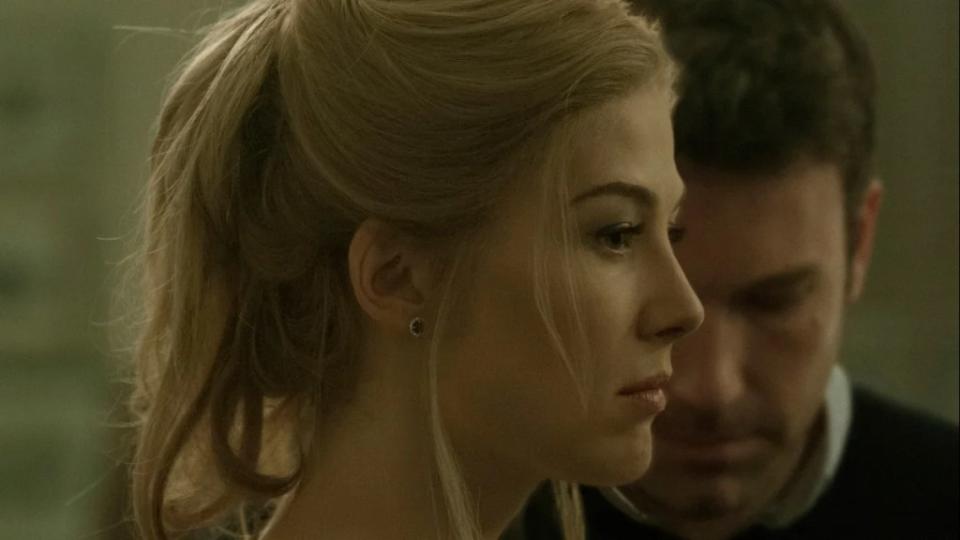
5. “Gone Girl” (2014)
Adapted from the runaway bestselling novel by author Gillian Flynn, “Gone Girl” feels like both a no-brainer and an incredible feat, given the unconventional structure of the book and what it would take to pull off in a movie. And yet, Flynn and Fincher pull it off, flawlessly. “Gone Girl” is ostensibly about a morally questionable small-town loser (Ben Affleck) whose ice queen wife (Rosamund Pike) disappears, leading to speculation that, of course, the husband did it. The actual answer, of course, is more sinister and surprising. A ruthlessly effective, downright ingenious thriller, for sure, but also a subtle interrogation into the dynamics that create (and then destroy) a loving marriage and a pointed critique of how missing persons cases are packaged and sold by the media. The performances are all peerless, with Pike picking up a Best Actress nomination for her work and Affleck proving, after being the subject of much media speculation in real life, to be just as talented and watchable a performer as he ever was. (Tyler Perry and Neil Patrick Harris are terrific in smaller supporting roles.) It’s a testament to Fincher’s cleverness that he was able to turn so many small, inherently “literary” details (like the scavenger hunt) into compelling cinematic fireworks. Backed by a nauseating (in a good way) score by Reznor and Ross, supposedly inspired by Fincher’s trip to a chiropractor and hearing some creepy background music that was meant to ease but instead made him anxious, “Gone Girl” is a perfect little movie and one that hasn’t lost any of its electricity almost a decade later. This one holds its spark.
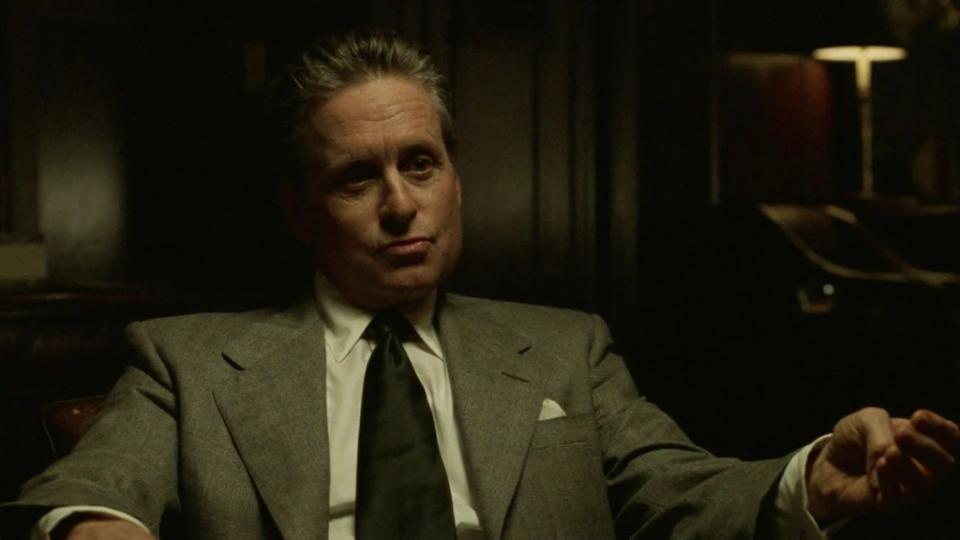
4. “The Game” (1997)
Two years after “Seven,” Fincher was already cementing his genius while also exposing his willingness to veer wildly from what the audience is expecting. After “Seven,” most would have probably imagined that the director would tackle another straightforward thriller; instead he chose something far stranger. In “The Game,” Michael Douglas plays a wealthy San Francisco investment baker named Nicholas Van Orton who gets a gift from his younger brother (Sean Penn) – a “game” from a mysterious company called Consumer Recreation Services. But as the “game” begins, Nicholas’ world is turned upside down. Has the game started? Has the movie started? And if the game has begun, when does it end? As his life becomes unglued, Fincher ups the ante, with a series of suspense set pieces as gripping as anything in his oeuvre, leading to a (at the time at least) highly controversial twist ending. In retrospect, Fincher has distanced himself from the film. In a since-lost Playboy interview from 2014, he said that he should have listened to his wife, producer Ceán Chaffin, and not done the movie. “We didn’t figure out the third act, and it was my fault, because I thought if you could just keep your foot on the throttle it would be liberating and funny.” But the movie is liberating and funny, operating on several different levels, most fascinatingly as a movie about the complexity and mystery of moviemaking. CRS, after all, is in the business of making peoples’ dreams a reality, moving heaven and earth for a singular, fleeting experience, one that might not even be remembered. (“In my world, this is totally doable,” Fincher says on the commentary track.) It’s tempting to shrug the movie off after a single viewing, but it becomes even more rewarding the more times you watch it – small details come to light and allusions become clearer. You can also feel the influence of “The Game” all around you, even today. The opening credits of “Succession” even ripped off the faux family movie footage from “The Game.” Even when he thinks he’s fallen short, Fincher is being endlessly quoted.
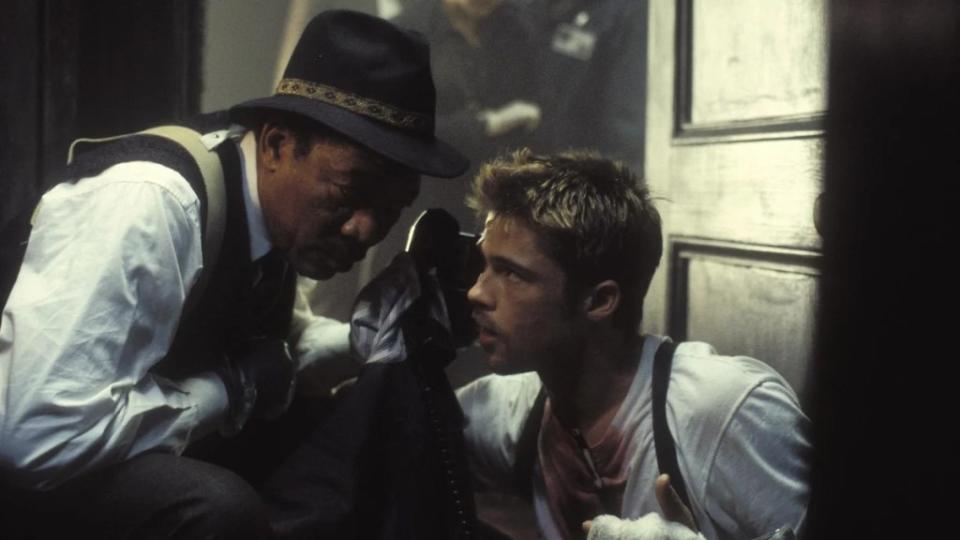
3. “Seven” (1995)
After his disastrous experience making “Alien 3,” Fincher chose a project that in all likelihood shouldn’t have worked – it was a script whose bleak ending had been rewritten several times during phases of development years earlier. (When Fincher got ahold of an earlier version of the script, he demanded that the original ending remain, much to the chagrin of the studio.) Brad Pitt plays a young cop transferring into a big city precinct and finds himself partnered with a wizardly older detective on the precipice of his retirement. Together they investigate a series of murders tied to the seven deadly sins, which lead them to Kevin Spacey’s John Doe. (In light of the allegations against Spacey, the character has somehow become even creepier.) Flying in the face of conventional procedurals, “Seven” offers no tidy solutions, no a-ha moments of revelation and only the faintest sketches of characterization (most of the heavy lifting is done by Gwyneth Paltrow as Pitt’s adorable wife). It takes place in an unnamed city where it’s constantly raining and crime is running rampant. There’s barely any explanation for the cruelty and violence beyond “s–t happens.” Released in a deathly September slot, the movie wound up making more than $325 million worldwide. Almost everything about “Seven” was instantly iconic – from the glitchy opening titles from Kyle Cooper (scored to a remix of a Nine Inch Nails song) to the profound, deeply disturbing ending that everybody talked about, discussed and lampooned. (You probably remember the first time you saw that ending; it stays with you.) “Seven” would become Fincher’s calling card – he would soon cement his knack for making stylish, cynical thrillers that are smarter and more visually arresting than virtually anything else around. “Seven” exploded like a stick of dynamite. You can still see the singe marks today.
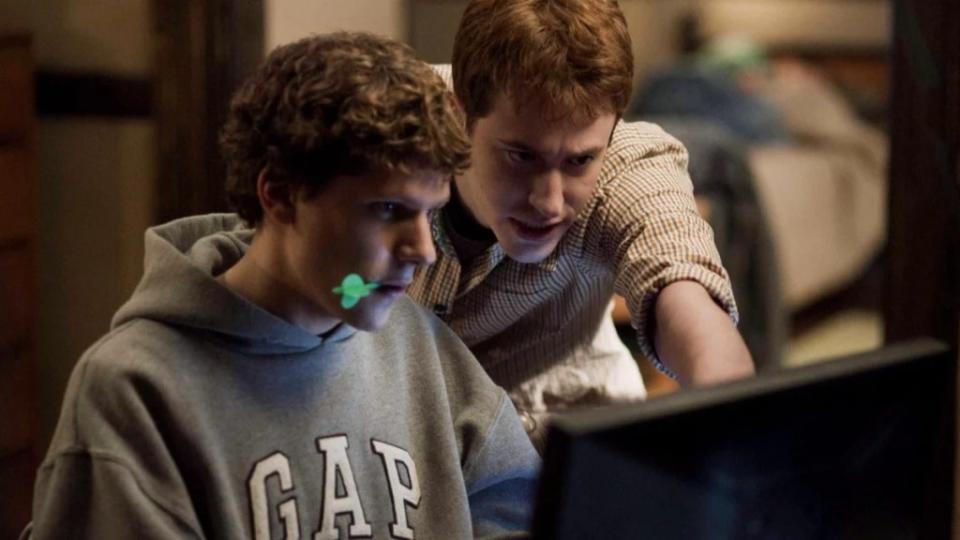
2. “The Social Network” (2010)
Fincher took his biggest swing yet with “The Social Network,” a snappy drama about the early days of Facebook. And it became one of his undeniable masterpieces. It was a movie about the very recent past, contextualized brilliantly by Aaron Sorkin’s verbose script. Jesse Eisenberg is Mark Zuckerberg, the brilliant, egotistical creator of Facebook. Or was he? As the movie weaves in and out of current day lawsuits against Zuckerberg, we see that the creation of the social media platform was much more complicated, with the Winklevoss Twins (Armie Hammer) and Zuckerberg’s former partner Eduardo Saverin (Andrew Garfield) all claiming to have been partially responsible for its eventual success. (In real life, they have all been revealed to be more hideously villainous than we could have ever imagined back then.) Even though it’s a movie primarily comprised of people talking in rooms (and giving depositions), it is just as striking as any of Fincher’s earlier films, moving from the autumnal hues of New England, when Zuckerberg and his cronies are enrolled in Harvard, to the sunnier tones of California, it is never short of stunning. “The Social Network,” besides being one of Fincher’s most critically adored efforts, being nominated for eight Academy Awards (and winning three), is one of the most important of his career. It forged the relationship between the filmmaker and composers Trent Reznor and Atticus Ross, who made their film-scoring debut with “The Social Network” after being the principle members of electronic rock group Nine Inch Nails. They have scored every one of Fincher’s movies since and won their first Oscar for “The Social Network.” And it also opened up what people thought of as a David Fincher film. It’s proof that he could do anything and pull it off flawlessly. But if you want to get really heated, just think about how “The King’s Speech” beat “The Social Network” for Best Picture. Truly insidious.
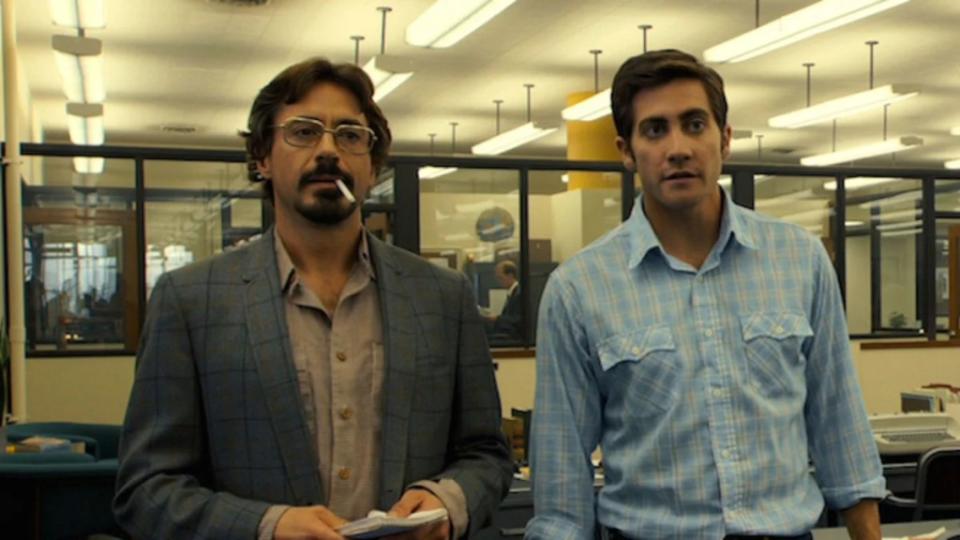
1. “Zodiac” (2007)
When Fincher was a young boy in San Francisco he remembered the police cars that followed his school bus, after threats had been made by the infamous Zodiac killer and published in local newspapers. It stuck with him. “Zodiac,” the best movie of Fincher’s considerable career and quite possibly one of the best movies ever, is a movie about obsession – it’s an intentional throwback to the paranoid thrillers of the 1970s (most directly “All the President’s Men”) and an exploration to the obsessiveness that can stretch across years or even decades. (The poster’s great tag line was, “There’s more than one way to lose your life to a killer.”) Jake Gyllenhaal plays Robert Graysmith, a San Francisco Chronicle cartoonist who becomes drawn into the web of the Zodiac killer, a madman who terrorized the Bay Area by leaving enigmatic puzzles and ciphers in local papers. Robert Downey, Jr. plays a Chronicle crime reporter who becomes similarly ensnared, with Anthony Edwards and Mark Ruffalo as the SFPD detectives assigned to the case. With meticulous attention to detail, Fincher recreates the era – the crime scenes, the fashions and the technology (or lack thereof). He gives the investigation the appropriate gravitas and always threads the pop culture that was inspired by the crimes (there’s a great moment set at the premiere of “Dirty Harry,” which took much from the case), making sure everything is just right. (Graysmith himself detailed the pre-production process in his incorrectly titled book “Shooting Zodiac.”) Graysmith is a perfect Fincher surrogate and in many ways “Zodiac” is his most autobiographical film. The movie is also hugely important to the evolution of Fincher the artist, with a more subdued approach to the movie’s visuals (it’s still striking but less showy) and, for the first time, Fincher shooting on digital. He would become an early evangelizer of digital over film and would never shoot another movie on film again. If anything the new technology emboldened his multiple take approach. It aggravated the actors. Downey, Jr. started leaving bottles of pee around the set and Gyllenhaal complained that he used the actors insensitively, saying it was hard being a color. But the heartache was worth it. As you watch it you feel as though you are witnessing something monumental, even more so if you watch the somehow better director’s cut. The fact that it was a financial disappointment and wasn’t nominated for a single Academy Award somehow makes it even more deserving of praise now. It’s simply the best.
The post Every David Fincher Movie Ranked, From ‘Alien 3’ to ‘The Killer’ appeared first on TheWrap.

